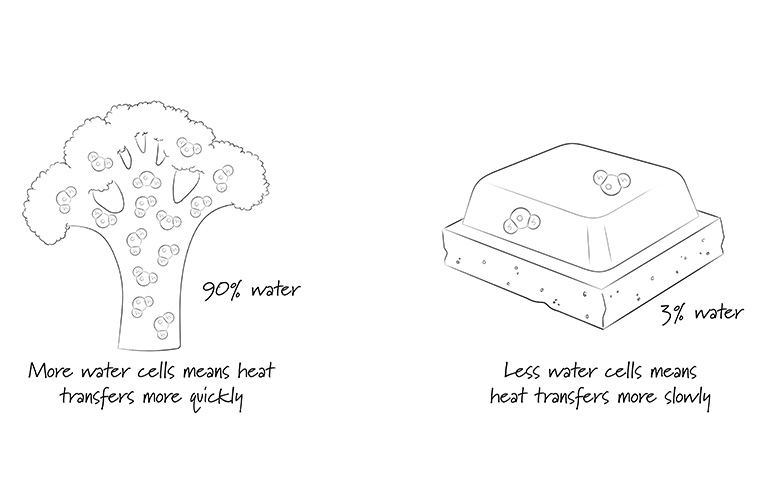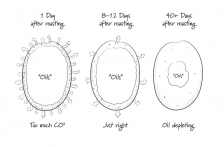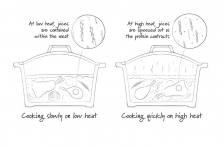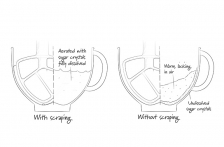Tips for Better Microwave Results
- 16744 Views
- 0 Comments

Heat lower water content foods like chocolate on much lower power settings. Make sure you select an appropriate power level for the ingredients you’re cooking and adjust the power level when necessary. Some microwaves make adjusting power quite tricky. But, the Breville Quick Touch™ lets you adjust power and time at any stage during the cooking cycle, simply by turning a dial. Sounds so simple yet you’ll be surprised what a difference it makes!
It’s the water inside food that is mostly responsible for the generation of heat.
As you’ve probably heard before, foods differ enormously in their water content. Vegetables for example, are made up of about 85% to 95% water. Meats are about 70%, and butter is less than 20. And, believe it or not, most cooking chocolate is only about 3% water!
So if microwaving is all about the water, and different foods vary from as low as 3%, to as high as 95% water content, then, as you can imagine, different foods behave very, very differently in a microwave. And this is why adjusting the amount of microwave power you apply is critical when you heat foods with higher or lower water contents.
Typically, the higher the water content, the higher the amount of microwave power you can apply and still heat the food reasonably evenly. But when there are fewer water molecules within the food (such as chocolate), you need to create less agitation of the molecules and give the heat more time to conduct into the food otherwise you’ll more likely get burnt edges, explosions, and other undesirable chemical reactions.
So, there are lots of foods you can’t simply ‘zap’ in the microwave on high. Selecting the right power level is critical to achieving an even result. Different ingredients need different levels of power and cooking times so ensure you select the right power setting for what you’re cooking, and adjust the power if it looks like the edges of the food are cooking much faster than the rest.










Comments